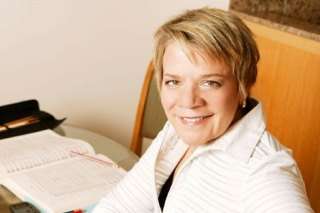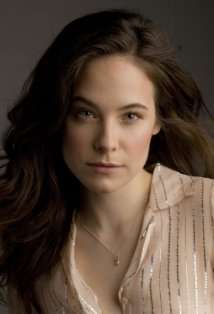|
Back
The Agony and the Ecstacy New York
Isaac Stern Auditorium, Carnegie Hall
11/19/2011 -
Arthur Honegger: Jeanne d’Arc au bûcher
Caroline Dhavernas (Speaker: Joan of Arc), Ronald Guttman (Speaker: Brother Dominic), Tamara Wilson (Soprano: The Virgin), Hae Ji Chang (Soprano: Margaret), Vijay Ghosh (Speaker: Third Herald, Jean de Luxembourg, Duke of Bedford), Kelley O’Connor (Mezzo-soprano: Catherine), Nathan Wyatt (Speaker: Regnault de Chartres, Guillaune de Flavy, A priest), Thomas Fallon (Tenor: Porcus), Morris Robinson (Bass)
Cynthia Millar (Ondes Martenot), Concert Artists of Baltimore, The Peabody-Hopkins Chorus, Edward Polochick (Director), Morgan State University Choir, Eric Conway (Director), Peabody Children's Chorus, Doreen Falby (Director), Baltimore Symphony Orchestra, Marin Alsop (Music Director and Conductor)
James Robinson (Stage Director)

M. Alsop (© Kim Thomson)
Twice, when I mentioned to friends that I would be hearing Honegger last night, they told me that the holiday wasn’t until December. Obviously, Honegger is less well known than Chanukah. So rare is Honegger performed here that ConcertoNet lists only a single brief reference over the past ten years to the composer’s presence in New York.
Yet if Honegger must be performed, how thrilled we all could be that it was his massive oratorio, Joan of Arc at the Stake. Marin Alsop has been championing the work for several years in Europe and Baltimore, and for good reason. Nay-sayers claim that the Paul Claudel libretto is a mishmash of satire, holiness and questionable history. But after listening last night, nobody can deny that for sheer emotional power, Honegger’s oratorio is as spectacular as its monumental orchestra, choruses and soloists.
Musically, it has nothing to do with Honegger’s colleagues, Les Six. Nothing is petty, lightly sardonic or clever. The choruses which condemn Joan as “Sorceress, apostate, heretic” are fierce and bloodthirsty. The same choruses announcing her sainthood through the flames are not so much reverential as rousing, believing, imploring.
The singing soloists are constantly multitasking their roles. They may be inquisitors, they may be pigs (!!), they sing falsetto or in animal language. The orchestra must change between simple folk csongs, Gregorian chants, tearing, searing climaxes and beastly noise replicas.
All of this over 90 minutes without a break. Yet 90 minutes of gripping music. I don’t believe any of the other “Six”, some of whom attempted these large canvases, came close to Honegger’s vision and execution. Like Bach, Honegger was a Protestant. But as Bach composed a B Minor Mass, Honegger composed this so Catholic story of spiritual voices, an Inquisition, and canonization.
Ms. Alsop’s most challenging problem was not the artists, but the balance. With children’s chorus, adult choruses (she used three, from Morgan State, Peabody Hopkins and the Concert Artists of Baltimore), as well as reciters and soloists, she had to first have Claudel’s eloquent French become clear. This was no problem for Caroline Dhavernas as Joan, a native of Montreal. Nor, theoretically, should it have been another challenge, since so many of the phrases are repeated. (Claudel knew how to emphasize his imprecations!)
Vocally, the singing soloists each had piercing voices, which they never tried to restrain. Thus that stunning bass, Morris Robinson, in his multiple roles, came out from the choruses with demonic power. Thus the pivotal Brother Dominic, as spoken by Ronald Gutrman, consoled, scolded, explained. Thus, Timothy Fallon, like an Irish tenor on steroids, fulfilled his role, both in insults and as a pig.
The women also were at their loudest and most resonant. Conductor Alsop had the double challenge of making the Virgin Mary and the two saints, both pure and commanding. Tamara Wilson was vivid as the Virgin, Hae Ji Chang and Kelly O’Connor were comforting (and emphatic) as the saints who comfort Joan.

C. Dhavernas (© Gregg Delman)
There were far too many others to mention. But above all we have that incredible actress Caroline Dhavernas, who must follow such previous Joans as Marthe Keller and Ingrid Bergman in previous performances and recordings. Ms. Dhavernas started here almost unassumingly as young Joan, changing character from joy (the remembrance of “Normandy...all red and pink in the glow of contentment”) to abject fear as the flames envelop her.
Ms. Dhavernas never had that all-out emotion of previous actors I’ve heard, but her restraint was that of the young girl (was the real Joan 14? 15? Younger?). One cannot say enough about her power.
What, though, do we make of the description of James Robinson as “Stage Director”? Moving these 280-odd people on the Carnegie Hall stage would be impossible, so he was confined to more subtle tasks. First, the costumes. Not period, of course, but in character. Joan with her shapeless peasant blouse, the men soloists in priestly black, and the saints, Margaret and Catherine in near identical black dresses. (Forgive me, but they looked like the twins in Kubrick’s The Shining!)
The lights lowered and were raised at times, the chorus became physically visually excited whenever needed. , the lovely Peabody Children’s Chorus marched in just as Joan relived her vernal youth.
The usual comment would extol Marin Alsop for her conducting prowess, and indeed it was the work of an artist who appreciated the theatricality of her piece. But somehow this seems redundant, for this production had so many components, surging up with such literally incendiary force that Ms. Alsop never stood out. She simply (!!) made it work.
It worked in tandem with Arthur Honegger’s magnificent music. Honegger wrote dozens of film scores, and he knew, perhaps too exactingly, how to achieve his results. That may well be true, but only a churlish Scrooge-like commentator would hold this against him. He had composed a masterpiece, and Ms. Alsop has opened our own festival season with this rightly flamboyant vocal tapestry.
Harry Rolnick
|